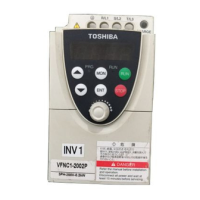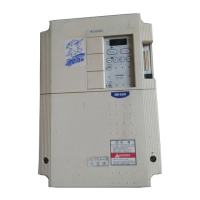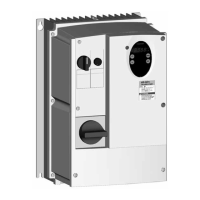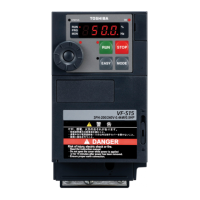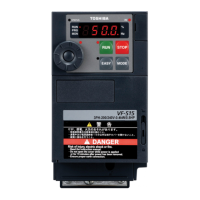E6582233
E-22
5
Base frequency
voltage 1
Output voltage
[V]/[%]
Output frequency [Hz]
Base frequency 1
0
VF1
VF2
VF3
VF4
VF5
V/f 5-point setting
Note 1: Restrict the value of torque to boost (vb) to 3% or so. Boosting the torque too much may impair the
linearity between points.
Note 2: If the V/f 5-point is set within the diagonally shaded area in the figure below, the V/f 5-point is placed
automatically on the boundary line (heavy line in the figure).
: Area in which the
V/f 5-point cannot
be set
Voltage
Frequency
0
1Hz
100%
7) Cautions for vector control
1) When performing vector control, look at the motor's name plate and set the following parameters.
(Base frequency 1), (Base frequency voltage 1), (Motor rated capacity),
(Motor rated current), (Motor rated speed)
2) The sensorless vector control exerts its characteristics effectively in frequency areas below the base
frequency (). The same characteristics will not be obtained in areas above the base frequency.
3) Set the base frequency to anywhere from 40 to 120Hz during vector control (=).
4) Use a general purpose squirrel-cage motor with a capacity that is the same as the inverter's rated capacity or
one rank below. The minimum applicable motor capacity is 0.2kW.
5) Use a motor that has 2-8 P.
6) Always operate the motor in single operation (one inverter to one motor). Sensorless vector control
cannot be used when one inverter is operated with more than one motor.
When using a combination of several motors, set the V/F constant (=).
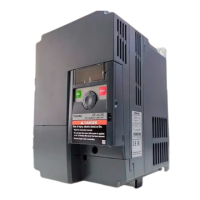
